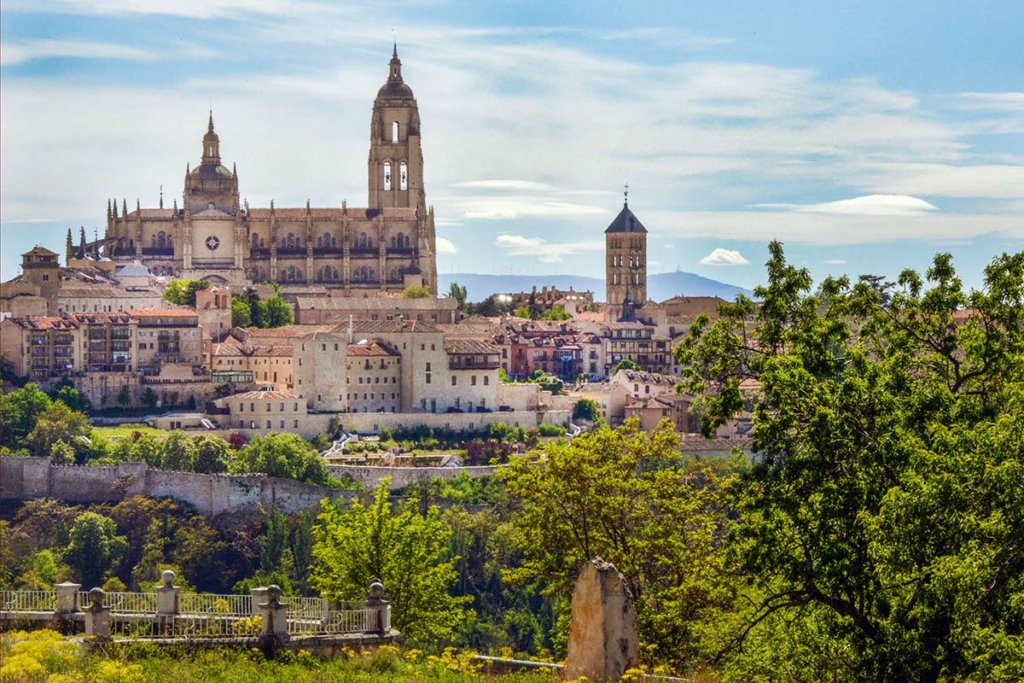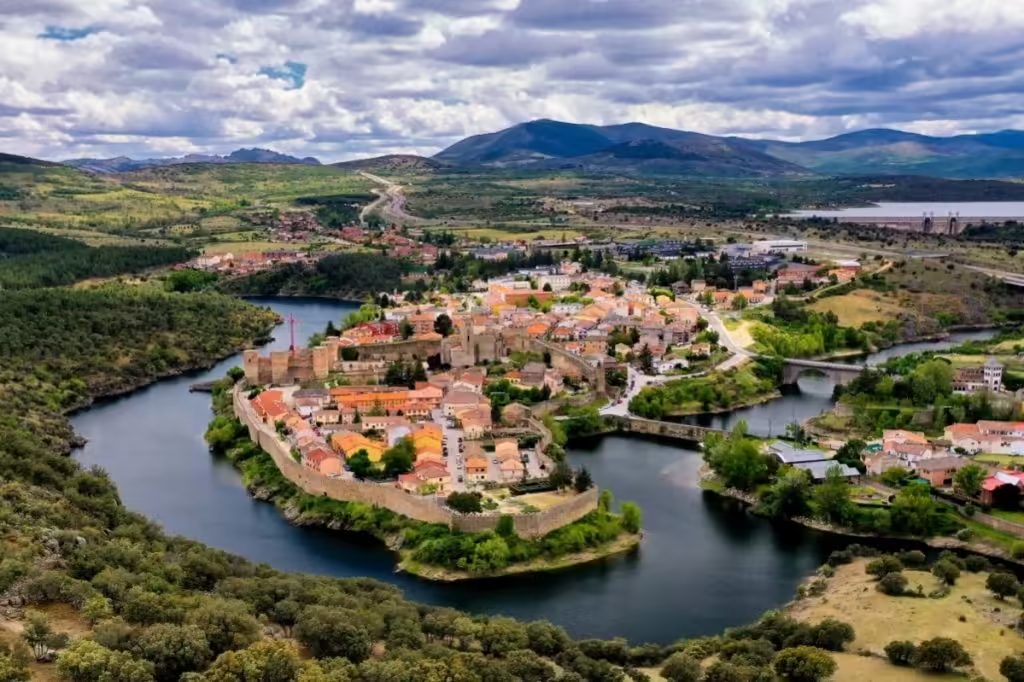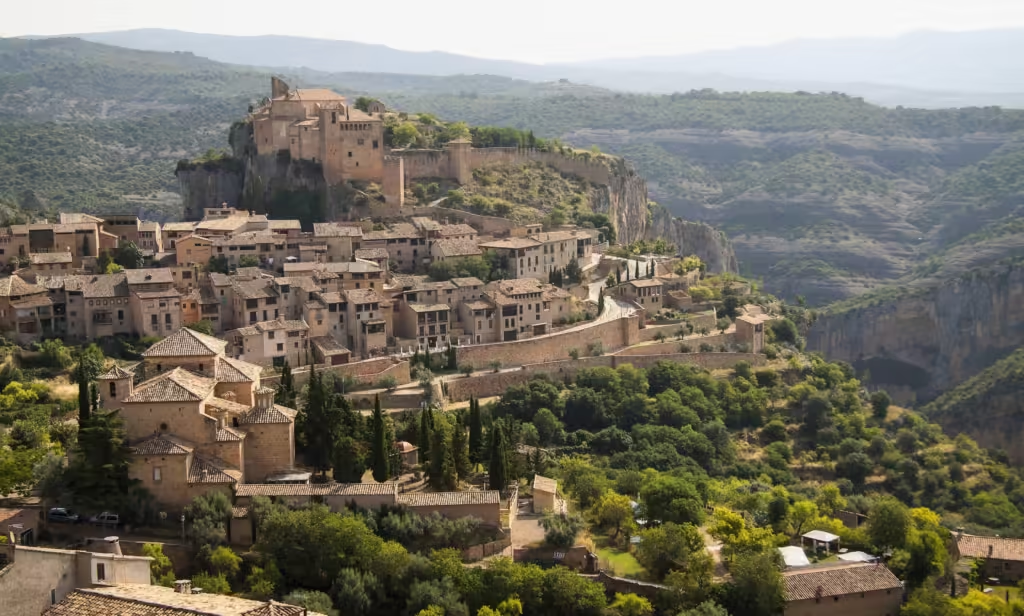Nestled in the heart of Spain, Castile and León is a region rich in history, culture, and natural beauty. As the largest autonomous community in Spain, it offers travelers a diverse array of experiences, from medieval cities to breathtaking landscapes.

Introduction to Castile and León
Castile and León, known as Castilla y León in Spanish, is an autonomous community in northwestern Spain. It encompasses nine provinces: Ávila, Burgos, León, Palencia, Salamanca, Segovia, Soria, Valladolid, and Zamora. The region is renowned for its rich cultural heritage, historic cities, and diverse landscapes. Visitors can explore medieval towns, majestic cathedrals, and natural parks, all while enjoying the local cuisine and wines.
Top Cities to Visit
Salamanca – Golden City of Knowledge
Salamanca is world-renowned for its University of Salamanca, founded in 1218, one of the oldest in Europe. The city is famed for its Plaza Mayor, Baroque architecture, and glowing sandstone buildings.
Don’t Miss:
The Old and New Cathedrals
The Casa de las Conchas
The Skyline from Roman Bridge
León – Gothic Majesty and Pilgrim Hub
A major stop on the Camino de Santiago, León is known for its stunning Gothic cathedral with stained-glass windows and the Basilica of San Isidoro. It combines medieval charm with vibrant tapas culture.
Must-Sees:
Catedral de León
Casa Botines by Antoni Gaudí
The Historic Quarter (Barrio Húmedo)
Burgos – Land of El Cid
Burgos is the birthplace of El Cid, the legendary Castilian knight, and home to a UNESCO-listed Gothic cathedral. It also offers a gateway to the Sierra de la Demanda mountains and natural landscapes.
Highlights:
Burgos Cathedral
Museum of Human Evolution
Monasterio de las Huelgas
Segovia – Roman and Royal Heritage
Famous for its Roman Aqueduct, fairy-tale Alcázar, and the Gothic cathedral, Segovia is a must-see destination. It’s ideal for a day trip from Madrid or a longer cultural stay.
Top Attractions:
Roman Aqueduct
Alcázar of Segovia
Segovia Cathedral
Ávila – City of Walls
Ávila is best known for its perfectly preserved medieval walls and its association with Saint Teresa of Ávila. The city’s skyline of turrets and towers makes it a medieval fantasy.
Don’t Miss:
The Walls of Ávila
Cathedral of Ávila
Convent of Saint Teresa
Valladolid – Cultural Capital of the Region
Valladolid is the official capital of Castile and León and once hosted the Spanish court. It offers museums, Renaissance buildings, and a thriving wine scene.
Highlights:
National Sculpture Museum
Plaza Mayor
Campo Grande Park
Nature and Outdoor Activities
Gastronomy in Castile and León
Las Médulas – Ancient Roman Gold Mines
A UNESCO World Heritage Site, Las Médulas is a stunning landscape of red hills and chestnut forests, sculpted by Roman gold mining operations. Great for hiking and photography.
Sierra de Gredos – Mountain Escapes
The Gredos Mountains offer scenic trails, alpine lakes, and diverse wildlife. Ideal for hiking, stargazing, and nature lovers.
Picos de Europa (León sector)
The northwest of León province touches the Picos de Europa National Park, one of Spain’s most dramatic natural areas. Go for trekking, climbing, or simply to enjoy the views.
The region is famous for hearty, rustic cuisine:
Cochinillo Asado (Roast Suckling Pig) in Segovia
Lechazo (Roast Lamb) in Valladolid and Burgos
Judiones de La Granja – Stewed beans from Segovia
Morcilla (Blood Sausage) from Burgos
Queso Zamorano – A rich sheep cheese from Zamora
And don’t miss the world-class wines from Ribera del Duero and Toro wine regions.
Travel Tips for Castile and León
Best Time to Visit
Spring (April–June) and Fall (September–October) offer mild weather and fewer crowds.
Summer is great for festivals but can be hot, especially inland.
Winter is quiet, and some mountain areas offer snow sports.
How to Get Around
High-speed trains (AVE) connect cities like Valladolid, Segovia, León, and Burgos.
Buses are reliable for regional travel.
Renting a car is ideal for rural towns and natural parks.
Language Tip
Spanish is the official language. English may not be widely spoken in rural areas, so basic Spanish phrases can be very helpful.
Frequently Asked Questions (FAQ) About Castile and León
1. What is Castile and León known for?
It’s known for medieval cities, castles, Romanesque churches, historic universities, and hearty cuisine.
2. Can I visit Castile and León from Madrid?
Yes, many cities like Segovia, Ávila, and Valladolid are accessible by train in under 90 minutes.
3. Is it good for family travel?
Absolutely. Cities are walkable, safe, and rich in culture. There are also parks, castles, and museums for kids.
4. What souvenirs should I buy?
Wines from Ribera del Duero
Handmade ceramics
Cured meats and cheese
Books or replicas related to Don Quixote or medieval Spain
5. Do I need a car to explore the region?
You can rely on public transport between cities, but a car is ideal for rural villages, natural parks, and wine country.
Final Thoughts on Castile and León
Castile and León is a treasure trove of Spanish heritage, medieval wonders, and natural beauty. From the glowing facades of Salamanca to the dramatic cliffs of Las Médulas, the region offers unforgettable sights and deep cultural roots. Whether you’re following the Camino de Santiago, exploring ancient towns, or savoring Manchego flavors, this region promises a rich and rewarding travel experience. Plan your journey to Castile and León today!

